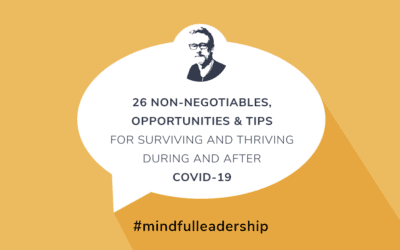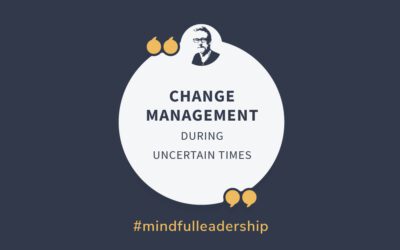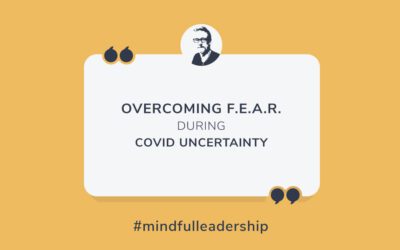Overcoming Burnout and Building Resilience: Strategies to Help Prevent Burnout and Help You and Your Team Thrive in a Fast-Paced World


Grant Ian Gamble is a best-selling mindful leadership author and speaker. He has over 30 years of experience in leading teams to create innovative customer experiences, building engaged workforces, and developing leaders who prioritize mindfulness in their approach.
Here are some of the strategies and tools that I’ve used to help prevent burnout in myself and my team, and how you can apply them to your own leadership style.
Burnout is All Pervasive
Burnout affects an ever increasing number of us as we face the escalating pressure created by today’s fast-paced world. It is a state of chronic stress that occurs when we experience prolonged periods of intense workload, or pressure. Exhaustion, cynicism, and detachment from our work and personal lives creeps in and our productivity declines exponentially.
According to productivity expert Chris Bailey, burnout can be described as a “diminishing returns problem,” where we become less productive and efficient as we work longer and harder.
Recognizing Burnout
One of the first steps to overcoming burnout is recognizing it in ourselves. Common symptoms of burnout include feeling exhausted, overwhelmed, and emotionally drained. We may also experience physical symptoms such as headaches, muscle tension, and digestive problems. Additionally, burnout can lead to feelings of cynicism, detachment, and a lack of motivation.
Dangers of Repetitive Burnout
When we repeatedly experience burnout, it can have serious consequences on our physical and mental health. Chronic stress can lead to a weakened immune system, cardiovascular disease, and depression. Moreover, burnout can negatively impact our relationships with others and our ability to perform well at work or school.
How can leaders and managers build resilience and help prevent their teams from burnout?
Leaders and managers play a critical role in preventing burnout in their teams. Here are some strategies that I have used to help my team members build resilience, manage stress, and avoid burnout:
- Create a positive work environment: When you create a work environment that is supportive, inclusive, and positive, team members find it much easier to navigate stressful times. This can involve recognizing and celebrating team members’ accomplishments, providing opportunities for professional development, and fostering open communication. Taking time to recognize team members doing good things will bubble the “good stuff” to the top and encourage team members to build on those positive foundations.
- Encourage work-life balance: Leaders and managers should encourage their team members to prioritize their personal lives and take time off when necessary. This can involve offering flexible work arrangements such as remote work or flexible schedules. Often I find myself working long hours and not demonstrating the work-life balance I want to encourage among my team members. Recognizing when I’m “overdoing it” and when team members are also not getting the rest and recuperation needed is critical to reduce burnout.
- Set realistic expectations: Leaders and managers should set realistic expectations for their team members and ensure that workloads are manageable. They should also provide the necessary resources and support to help their team members succeed. Seeking to understand the loads and pressures on your team members helps understand what they have the capacity to manage and allows you to adjust your expectations accordingly.
- Foster a culture of collaboration: Leaders and managers should encourage collaboration among team members and provide opportunities for teamwork. This can help to reduce feelings of isolation and promote a sense of belonging. Often team members will step up to support a team member who is struggling. Regular catchups within teams can help team members understand the pressure each other is facing. “Stand Ups” are a great tool to improve this appreciation of each other’s workload.
- Provide support for mental health: Leaders and managers should provide support for team members who may be struggling with mental health issues. This can involve providing access to mental health resources and promoting a culture of openness and support. The stigmas around mental health are slowly dissipating and we’re recognizing as a community that mental health is a very real issue for many of our friends and workmates. Being aware of your team member’s mental state will allow you to support them when warning signs arise.
By implementing these strategies, leaders and managers can help their teams to build resilience, manage stress, and avoid burnout. This can lead to improved productivity, job satisfaction, and overall well-being.
Strategies to Build Resilience and Overcome Chronic Stress
There are many strategies that we can use to build resilience, overcome burnout, and manage chronic stress. One of the most effective methods is to practice self-care. This can include getting enough sleep, eating a healthy diet, and exercising regularly. Additionally, it is important to set boundaries and prioritize our time effectively to avoid becoming overwhelmed.
Another strategy is to engage in mindfulness practices such as meditation, breathwork, or yoga. These techniques can help us become more aware of our thoughts and feelings, and to manage them in a healthy way. Moreover, taking breaks throughout the day, going for a walk, getting a change of scenery, can help us recharge our batteries and avoid burnout.
In conclusion, burnout is a pervasive issue that affects many people in today’s fast-paced world. Recognizing the signs of burnout is an important step in overcoming chronic stress in yourself and others. Equally, building resilience by practicing self-care, setting boundaries, and engaging in mindfulness practices is a crucial prophylactic for burnout. By implementing these strategies, we can overcome burnout and achieve greater productivity, happiness, and overall well-being for ourselves and our teams.
What small change can you implement today to help prevent yourself or your team from experiencing burnout?

More Articles:
26 Non-Negotiables, Opportunities & Tips for Surviving and Thriving During and After the COVID-19 Pandemic
The impact of the COVID-19 pandemic on business and the economy is unprecedented.
Businesses negatively affected by COVID-19 are faltering. Even the most robust companies will need to fight their way back to their pre-pandemic best, and marginal ones will likely not re-emerge from the crisis.
Companies positively affected by COVID-19 also need to chart new courses. That might mean establishing new supply chains, recruiting additional talent, or retooling their business to cope with massive spikes in sales and activity.
As businesses recalibrate, strategize, and pivot, one thing remains clear: these are unchartered waters for everyone.
There are some non-negotiables and common denominators across industries and sectors, but for the most part this is a unique set of circumstances that demand novel solutions and strategies.
I have detailed some non-negotiables, opportunities, and tips below:
Change Management During Uncertain Times
I first experienced the joy of sailing as a cadet at the Royal Australian Naval College. Harnessing the power of the wind was both challenging and exhilarating. Since those days of sailing Bosun’s Dinghies around Jervis Bay, I’ve sailed everything from windsurfers and kiteboards all the way up to a 48-foot catamaran on the Great Barrier Reef in Australia.
Overcoming F.E.A.R. During COVID Uncertainty
When you’re dealing with the unknown, facts are changing daily, experts are predicting very different outcomes, and the media, politicians and your own predilections are distorting the information you’re processing. This makes it really difficult to discern false evidence from real facts.
Fill out the form below and receive a PDF download of "6 Key Strategies to Engage Untapped Fitness and Wellness Market Segments"
Let's Connect!
CUSTOMER EXPERIENCE, TEAM ENGAGEMENT & WORKPLACE WELL-BEING: AFFINITY OS™ | WELLNESS INTEGRATION | MINDFUL LEADERSHIP: "THE AFFINITY PRINCIPLE"
0475 866 592

The Affinity Principle™ by Grant Gamble presents a formula for business success through a people-centric, mindful leadership approach.
PEOPLE FIRST, ALWAYS.




